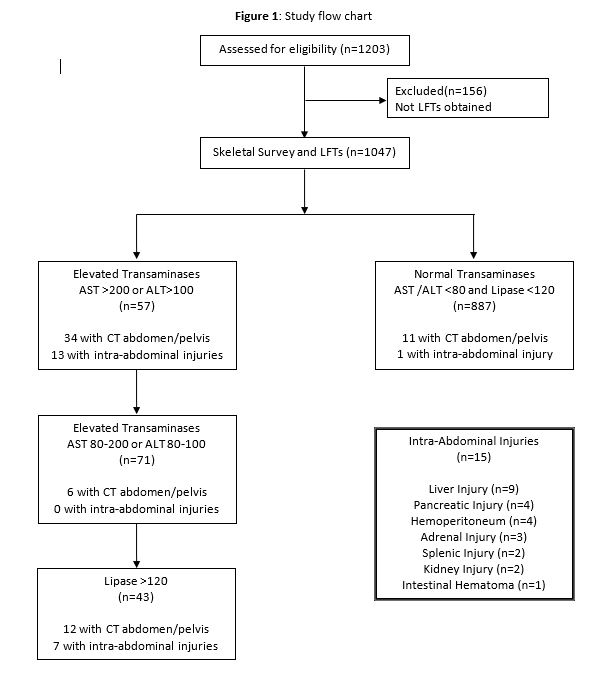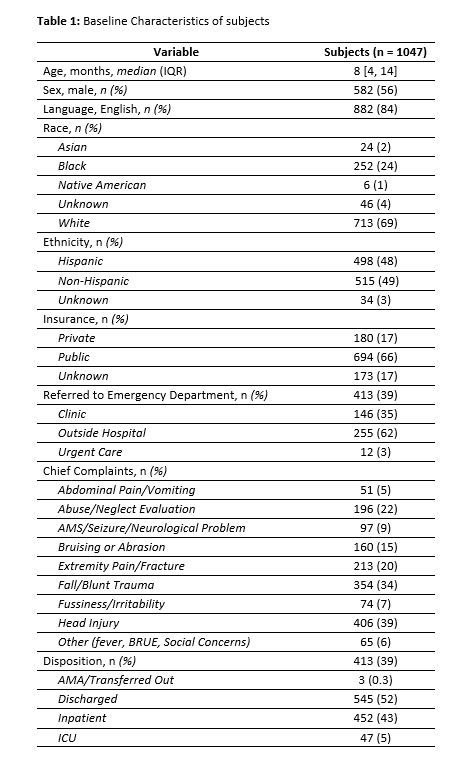Emergency Medicine
Session: Emergency Medicine 10: Trauma
391 - Abdominal Trauma in Suspected Child Abuse Evaluation in the Emergency Department
Monday, May 6, 2024
9:30 AM - 11:30 AM ET
Poster Number: 391
Publication Number: 391.3076
Publication Number: 391.3076

Nidhi Singh, MD
Assistant Professor
Baylor College of Medicine
HOUSTON, Texas, United States
Presenting Author(s)
Background: In the Emergency Department we are tasked with appropriately recognizing child abuse among large volumes of undifferentiated patients. Intra-abdominal injury (IAI) is the second leading cause of mortality in abused children. There is a challenge in identifying these injuries in children due to their limited verbal skills, delayed symptoms, thinner muscular abdominal wall, and limited bruising; therefore, liver function tests (LFTs), such as AST/ALT, are frequently used to screen these patients since many injuries may be occult.
Objective: The primary outcome of our study was to assess the rate of compliance in obtaining LFTs and appropriate imaging with elevated LFTs (defined by our institutional protocol as AST >200IU/L and/or ALT>100IU/L) during suspected abuse evaluations. The secondary outcome was to assess the rate of IAI and occult IAI in this cohort. Additionally, we aimed to determine the sensitivity and specificity of this higher cut off for LFTs used at our institution.
Design/Methods: We conducted a retrospective cohort study of children aged 0-36 months evaluated in the emergency department for suspected child abuse with a skeletal survey between 01/01/2014 and 12/31/2016. We calculated frequencies and proportions for categorical variables. Furthermore, Sensitivity and specificity for LFTs to detect IAI was determined.
Results: 1203 subjects were evaluated with skeletal survey and 1047 (87%) had LFTs obtained. 57 (5.4%) subjects had elevated LFTs, of which 34 (59.6%) had a CT abdomen/pelvis. Of the subjects with LFTs, 51 (4.9%) had had definitive testing CT abdomen/pelvis and 15 (1.4%) subjects had intra-abdominal injuries. 67% of the IAI were clinically occult without any physical exam findings. Using the higher LFT threshold yielded a sensitivity of 87% and specificity of 96% (positive likelihood ratio: 21.7 and negative likelihood ratio: 0.14).
Conclusion(s): These findings suggest efforts should be made to improve compliance of appropriately imaging individuals with elevated LFTs and concerning physical exam findings in child abuse evaluations in the emergency department. Our higher LFT threshold shows promising sensitivity and specificity and could use further evaluation on a multi-center platform.


